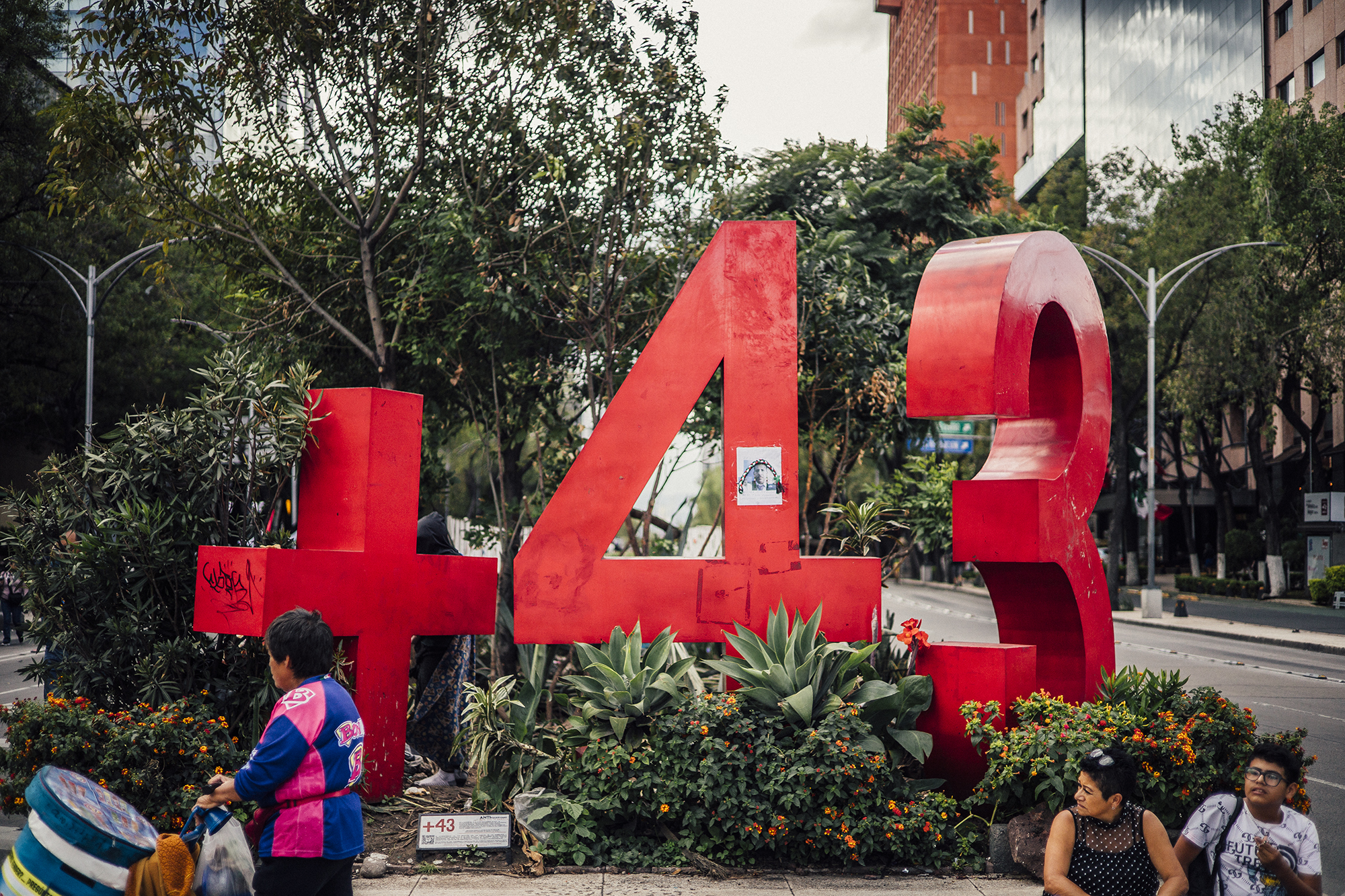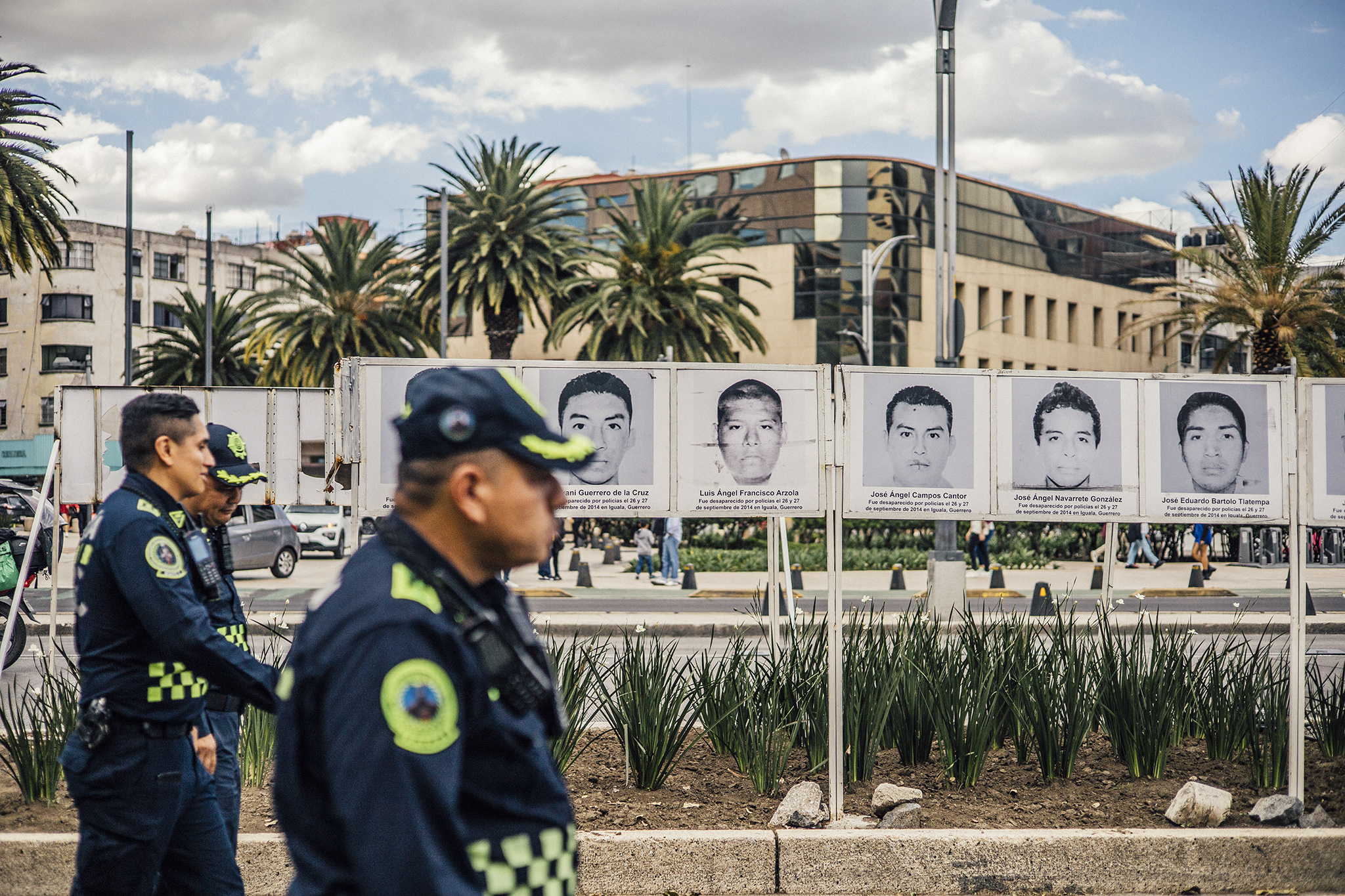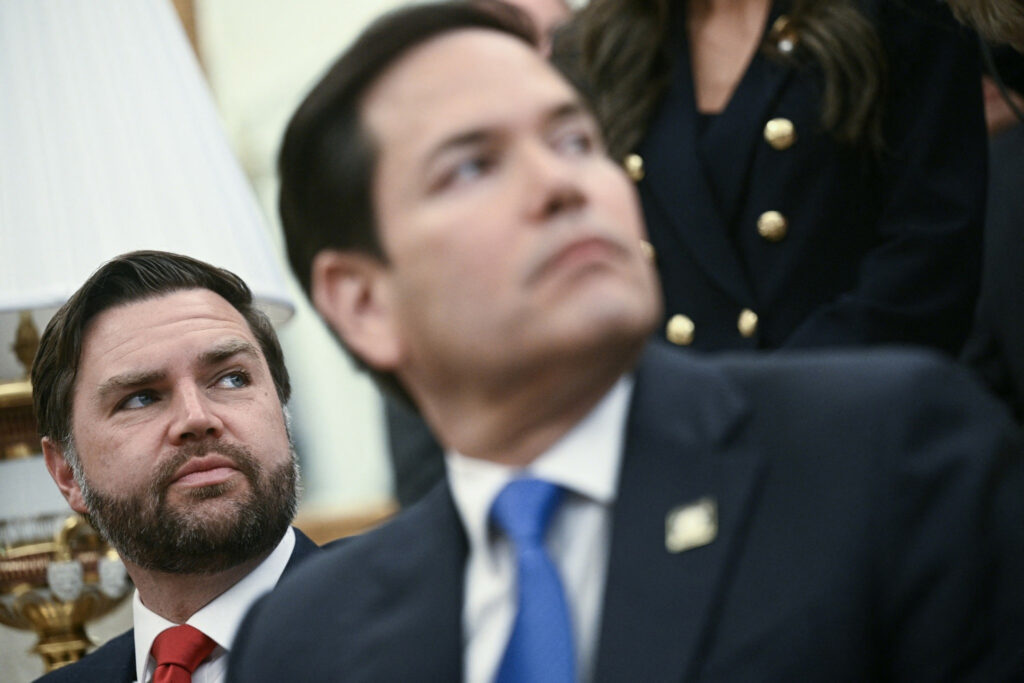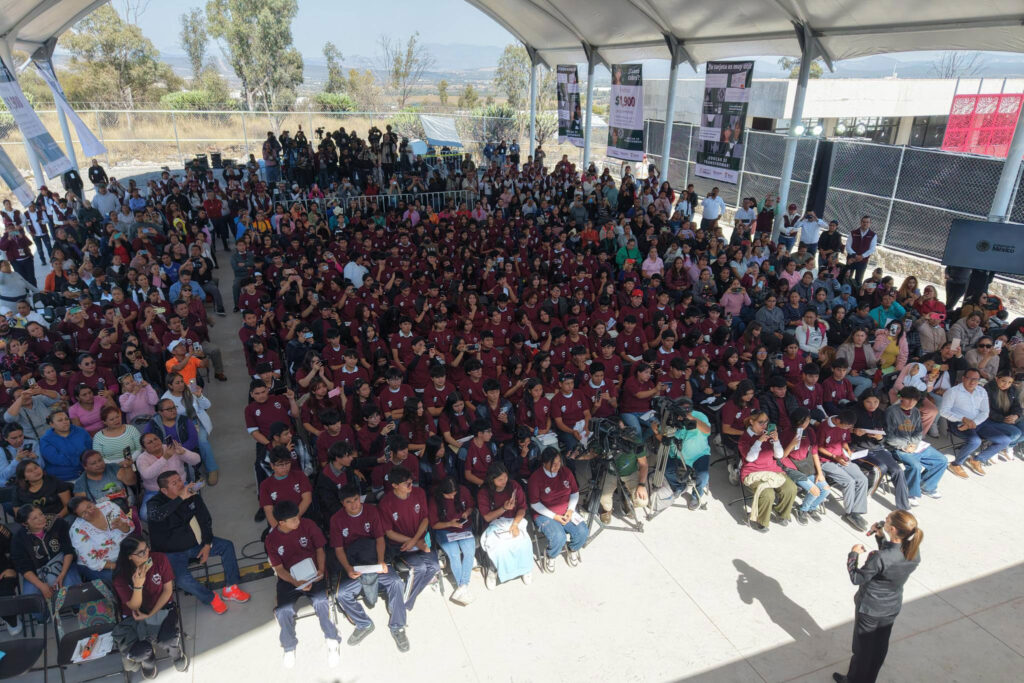11 Years Without the 43 Ayotzinapa Students’ Whereabouts
This editorial by Magdalena Gómez originally appeared in the September 23, 2025 edition of La Jornada, Mexico’s premier left wing daily newspaper. The views expressed in this article are the author’s own and do not necessarily reflect those of the Mexico Solidarity Project.
Since the night of September 26, 2014, and into the early hours of the following day, the whereabouts of the 43 students from the Raúl Isidro Burgos Rural Teachers’ College in Ayotzinapa, who disappeared near Iguala, Guerrero, remain unknown. Eleven years later, the final result is a lack of truth and justice.
To this day, the Mexican state has not given a definitive account of this. Not only to their mothers and fathers, direct victims of a pain that never ends and a fierce will to continue their demand, the same one that so many have cried out over the years: “They took them alive, we want them back alive.”
I will only recall a few of the failed official strategies, some more blatant than others, starting with the early, supposed “historical truth” with which Peña Nieto’s supporters sought to close the case surrounding the Cocula garbage dump, which today has former Attorney General Jesús Murillo Karam under house arrest and Tomás Zerón a fugitive in Israel. The supposed truth was dismantled by the work of the Interdisciplinary Group of Independent Experts (GIEI), which Peña Nieto dismissed in the face of initial evidence. Along the way, it should be noted that the involvement of the criminal group that operated that night in 2014 has not been highlighted; some of them were detained and forced under torture to testify about the “historical truth,” which ultimately led to their release.
Four years later, former President Andrés Manuel López Obrador’s commitment at the start of his administration to create the Commission for Truth and Access to Justice in the Ayotzinapa Case (Covaj) and to appoint Alejandro Encinas, Undersecretary of Human Rights in the Ministry of the Interior, as its president, generated hope. This decision was reinforced by the return of the GIEI experts. The groundwork seemed to be in place to resume the investigation into the case.
In this concise account, it is important to highlight the sixth and final report of the GIEI, which constituted a sort of political watershed. It was presented on July 25, 2023, and generated intense controversy due to the very forceful conclusions expressed with ethics and professionalism. In it, they affirmed that the Army, contradicting what it had said for almost nine years, from September 26 to 27, 2014, not only knew what was happening in real time, but was also present where it had denied being. They revealed the Army’s intervention from the 27th Battalion in Iguala, Guerrero, in complicity with members of an organized crime group. In particular, they stated that it failed to hand over 800 key files, despite having full authority to do so, having been instructed at the time by the President of the Republic to do so. It’s difficult to reconstruct in a few lines the tortuous process of an investigation that is currently marked by the major halt brought about by the statement of the former president of the COVAJ, Alejandro Encinas, who announced after his second report that, indeed, we are facing a state crime and the Army’s involvement must be unraveled.

Previously, the virtual dismissal, but not resignation, of the former special prosecutor for the case and the departure of the GIEI (Interdisciplinary Group of Independent Experts) took place. It was evident that they had clashed with the Army. A new prosecutor for the case was appointed, as well as a new Undersecretary of Human Rights and president of the COVAJ (National Commission for Human Rights) following Encinas’ resignation.
What was the serious turn of events after the latest GIEI report and Encinas’s courageous stance? The President of the Republic chose to unconditionally support the armed forces and questioned both the GIEI and the United Nations Human Rights Office in Mexico, revealing a conspiracy against his government and continuing his repeated criticism of the human rights organizations that have followed the case since 2014.
The now former resident took charge of the investigation, and in a sort of dispute over the truth, he presented a report on July 8, 2024, addressed exclusively to the families of the 43 missing students, not to their defenders, whom he referred to as alleged human rights defenders and questioned international organizations such as the Organization of American States (OAS) and U.S. government agencies. He noted that the Army’s involvement had not been proven (published in the newspaper La Jornada on July 20 of that year). Thus, in this tense atmosphere, the government concluded.
President Claudia Sheinbaum has resumed relations with the families of the 43 students on better terms. She has spoken about new lines of investigation that have not yet been finalized. She suggested they would seek support from experts at the UN, and immediately clarified that she was not referring to the GIEI. However, on the 11th anniversary of their children’s disappearance, the families still have no reason to find hope for the long-awaited truth and justice.
-
The Poor as Instruments, Not Allies
Welfare programs with political aims are not the same as forging political alliances with the impoverished population created by voracious neoliberal capitalism.
-
Florida, the Race for the Presidency & Opaque Capital
Contemporary Florida is the distorted and advanced mirror of a new form of global governance, where money laundering has not only been tolerated, but institutionalized & updated for the digital age, fed by a murky river flowing from the Global South.
-
People’s Mañanera December 22
President Sheinbaum’s daily press conference, with comments on economic achievements, Sonora development plan, extortion of immigrants, Baja California Sur dam, water treaty with US, nepotism loopholes, and García Luna.




